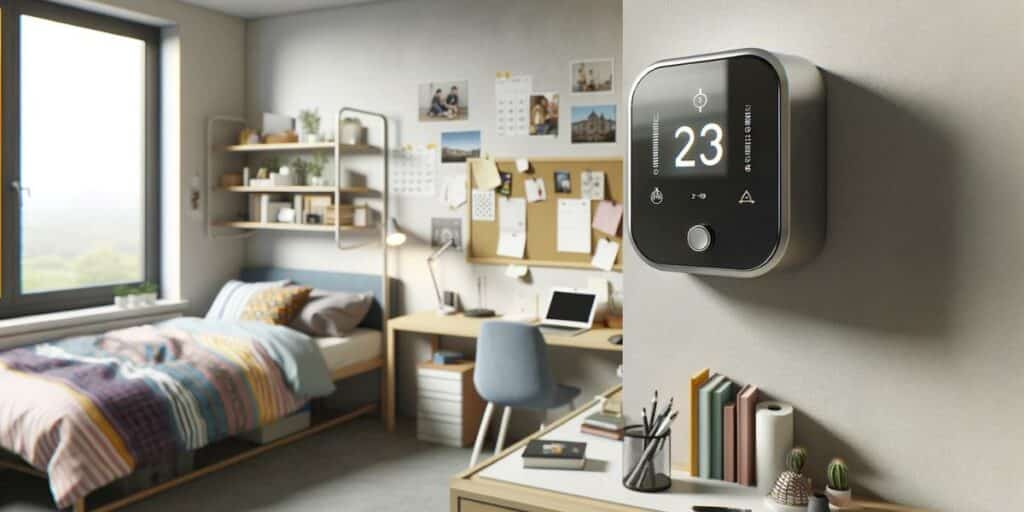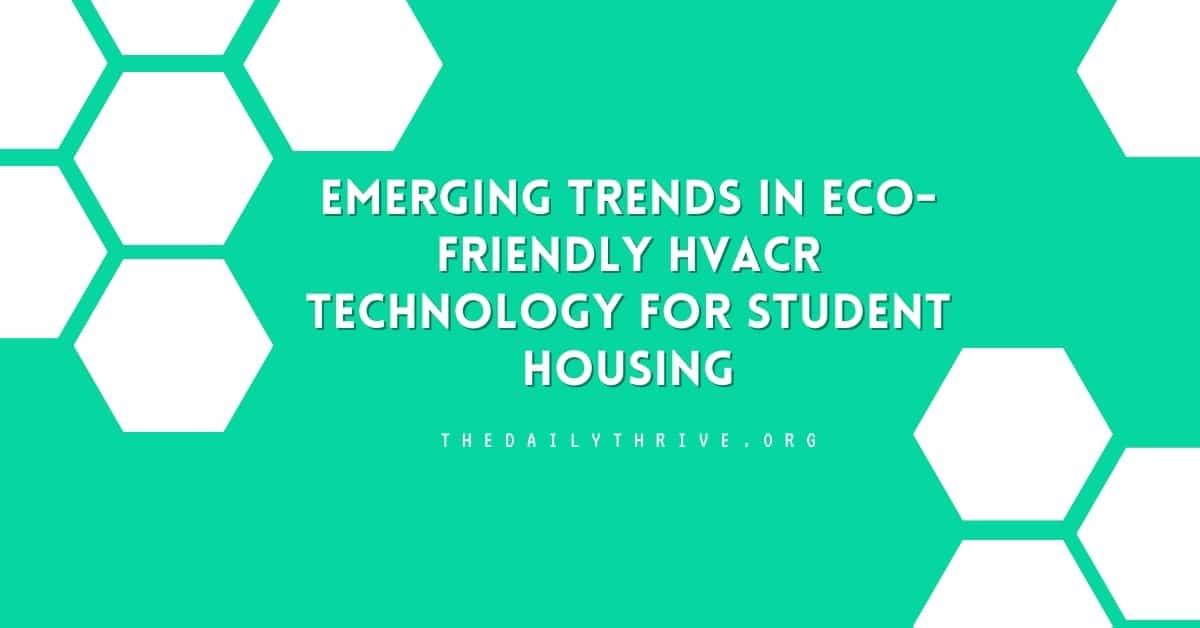As the world becomes increasingly eco-conscious, student housing is not being left behind. The surge in environmentally friendly initiatives has brought about innovative changes in HVACR technology. Today’s students are not just looking for a place to stay; they want living spaces that are sustainable and energy efficient.
This shift is about reducing carbon footprints and adopting a lifestyle that is more harmonious with our planet. If you major in environmental studies, you can get an essay online to research the best sustainable practices and improve your essays. Understanding the latest trends in HVACR technology can be a game-changer for you as a student.
As you read on, you’ll find practical recommendations on how to integrate these emerging technologies into your daily life.
Smart Thermostats in Student Housing
Smart thermostats are revolutionizing the way students control the climate in their living spaces.

These devices learn your schedule and adjust temperatures accordingly. Imagine returning from a long day of classes to a perfectly warmed room in winter or a pleasantly cooled space in summer, all without lifting a finger.
Moreover, these thermostats provide data on your energy consumption. This feature is particularly beneficial for students keen on reducing their carbon footprint. By tracking and adjusting your HVACR usage, you’re not just saving money; you’re actively participating in a larger movement toward sustainability.
Energy-Efficient HVACR Systems
Gone are the days of clunky, energy-guzzling HVACR units. Today’s systems are sleek, efficient, and surprisingly quiet. These modern units use less energy to achieve the same level of comfort, making them ideal for student housing.
Their key features include:
- Lower energy consumption
- Reduced greenhouse gas emissions
- Enhanced indoor air quality
- Smart compatibility with other devices
- Longer lifespan than traditional models
- Programmable features for maximum efficiency
- Quiet operation, perfect for study environments
- Sleek and compact designs
- Lower maintenance costs
- Adaptability to various climate conditions
These systems are beneficial for the environment and kinder to your wallet. While the upfront cost may be substantial, the savings in utility expenses make it a wise decision for students who are mindful of their budget.
Solar-Powered HVACR Solutions
Incorporating solar energy into HVACR systems is a trend gaining momentum in student housing. These systems use solar energy, one of the most abundant energy sources available.
The integration of solar panels with HVACR units is a practical approach to reducing reliance on non-renewable energy sources. Additionally, many colleges and universities are adopting these systems, showcasing their commitment to eco-friendly practices and setting an example for students.
Geothermal Heating and Cooling
These systems utilize the earth’s constant underground temperature to heat and cool buildings. This method is highly efficient and sustainable, making it an excellent option for student housing.
These installations function by pumping a water-based solution through underground pipes, which absorb or release heat as necessary. This method leads to a reduction in energy usage compared to conventional HVACR systems.
HEPA Filters
HEPA filters in HVACR systems are becoming a staple in student housing for their ability to improve indoor air quality. These filters capture pollutants, allergens, and various particles, guaranteeing that the air you inhale is pure and conducive to good health.
Their benefits in HVACR systems are:
- Trap up to 99.97% of airborne particles
- Eliminate odors and harmful gases
- Enhance overall indoor air quality
- Ideal for students with allergies or asthma
- Work efficiently with existing HVACR units
- Create a cleaner, healthier living environment
- Prolong the lifespan of HVACR systems

By choosing housing equipped with HEPA-filtered HVACR systems, you’re ensuring your comfort and taking a significant step toward maintaining your health.
Ventilation Strategies for Improved Air Quality
Effective ventilation is crucial, especially in shared student accommodations. Modern HVACR systems are now designed with advanced ventilation strategies that ensure a constant flow of fresh air, eliminating stale and contaminated air from indoor spaces.
These advanced systems are adept at balancing indoor and outdoor air to maintain optimal living conditions. This is especially critical in student accommodation, where high occupancy can lead to poor air quality. Proper ventilation also helps control humidity levels, prevent mold growth, and ensure a comfortable and healthy living space for students.
IoT for Enhanced HVACR Control
The Internet of Things (IoT) is transforming HVACR systems into smart, interconnected devices. This technology allows students to control and monitor their living environment remotely via smartphones or other devices.
Imagine adjusting your room’s temperature while you’re in class or turning off the AC from your bed using just your phone. These IoT-enabled systems also provide alerts for maintenance needs or inefficiencies, ensuring optimal performance. For students, this means unprecedented convenience and control over their living environment, aligning perfectly with the digital native lifestyle that most are accustomed to.
Conclusion
As sustainability becomes a top priority, we can expect even more exciting advancements in HVACR technology for student housing. The possibilities are endless. Imagine comfortable and energy-efficient dorms that generate clean energy, contributing to a greener future for campuses and beyond.
By embracing these innovative solutions, student housing can become a model for sustainable living, setting the stage for a future where comfort and environmental responsibility go hand-in-hand. Let’s cool down on carbon emissions and heat the conversation about making student housing a beacon of progress in the fight against climate change.
As we embrace these technological advancements in HVACR systems, we’re enhancing our immediate living conditions and contributing to a larger, global effort for environmental sustainability. In this quest, you might stumble upon various resources, from blogs to the best essay writing services, offering insights on green living. HVACR technology in student housing is rapidly evolving, offering exciting opportunities for eco-conscious living. By staying informed and making smart choices, students can contribute to a more sustainable future.






